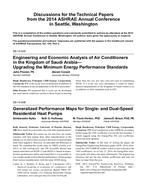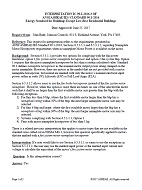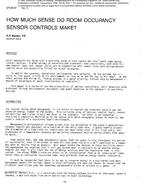Renewable energy generated by sources like wind and solar is unpredictable. Sometimes the renewable energy is available when it’s not needed and vice-versa. These resources ramp up or down very quickly depending on the weather — wind gust will rapidly increase the output from a wind farm or a cloud cover will decrease output from a photovoltaic installation. Integrating these renewables in the electricity grid is a challenge for the grid operators who are always trying to balance supply and demand of electricity. Currently utilities and grid operators use existing generating assets and ramp them up or down to balance this fluctuating generation. This ramp up and down causes wear and tear as well as maintenance issues on expensive generating assets.
End-use thermal devices like water heaters offer an existing and a cheaper resource to help balance load and generation. This paper presents analysis of a utility SCADA (Supervisory Control and Data Acquisition) data. Total load on the system, output from each generator on the system and frequency are presented. The results show the effects of wind on the system, particularly on the generators that are used to balance the load and generation. With twice as much wind coming online by end of 2012 in this particular utilities territory, wind integration is high priority for the system operators. A discussion on how residential electric resistance water heaters can help mitigate the issues related to wind integration is also provided. This same analysis can also be applied to other intermittent renewable generation.
Citation: ASHRAE Conference Papers, Denver, CO
Product Details
- Published:
- 2013
- Number of Pages:
- 8
- File Size:
- 1 file , 880 KB
- Product Code(s):
- D-DE-13-C025


